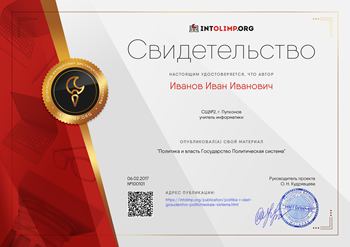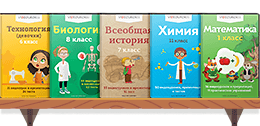Technological cards
Subject: STYLISTICS
The theme of the lesson: THE CONTENT AND AIM OF STYLISTICS
The type of the lesson: combined lesson
The aims of the lesson:
Educational: Consolidation lexical and grammatical material on theme acting out dialogues, working with text, describing pictures, using some elements of modular technology.
Up – bringing aim: To teach students to be more attentive to each other, to be accurate, to keep their flats clean.
Developing aim: To develop the students’ theoretical and practical material on the given lexical and grammatical material, their cognitive abilities, their skills in listening, reading, speaking and writing.
Communicative aim: To practice the students’ oral speech on the given material.
Inter – subject connection: Kazakh grammar, practical grammar, practical phonetics.
The methods of teaching: the modular technology (level tasks)
The equipment of the lesson:
The distributive material: level tasks, pictures, texts.
The technical means: an interactive blackboard.
Literature: M.M. Zhanpeyissova “Модульдік оқыту технологиясы”, Yu. Golitsinsky “Spoken English”, N.A. Bonk, G.A. Kotij, N.A. Lukjanova “English textbook”, Yu.V. Mjurrei “Russian proverb, sayngs and idioms and their English equivalents”, Yu.Golitsinsky “Грамматика. Сборник упражнений”.
The plan of the lesson
Organization moment.
Checking up the home task.
Work with proverbs.
Reading and translating the dialogue.
Making up our own dialogue.
Consolidation of grammar structure: there is/there are.
Work with interactive blackboard.
Describing the classroom using the grammar structure there is/there are.
Presentation of new lexical theme.
Make up sentences with new words and word combinations
Work with text: reading and to translating the text,
doing the level tasks.
Concluding stage.
“My favourite room”, describing pictures using grammar structure there is / there are and new vocabulary.
Test .
Evaluation.
Giving home task.
Marking.
The procedure of the lesson
Organization moment
Good morning, dear students! There are some guests at our lesson today. They are the teachers of our college. Let’s greet them. There is an English proverb at the blackboard. Let’s read and translate it into Kazakh and Russian language and address to our teachers.
Make yourself home. Өздеріңізді жайлы сезініңіздер. Чувствуйте себя как дома.
Let me announce the theme of our lesson. We are going to speak today about house or flat, to consolidate the grammar construction “There is / there are”. Let’s begin our lesson. There is a slogan of our lesson. Let’s read and discuss it “My house is my castle”.
Checking up the home
You should find and learn by heart the proverbs on the theme. Who wants to be the first?
East or west, home is best. Home is home but it never so homely.
There is no place like home. Home is home though so homely.
Men make houses, women make homes.
Reading and translating the dialogue.
Making up our own dialogue using the model.
PLAN
1. The object and aim of Stylistics
2. The Branches of stylistics
Stylistics, sometimes called linguostylistics, is a branch of general linguistics.
Arnold defines stylistics as a branch of linguistics, investigating the principles and effect of choice and usage of phonetic, lexical, grammatical and other language means with the purpose of transmitting thoughts and emotions in different circumstances of communication.
The types of texts that are distinguished by the pragmatic aspect of the communication are called Functional styles of language (FS); the special media of language which secure the desirable effect of the utterance are called stylistic devices (SD) and expressive means (EM).
In dealing with the objectives of stylistics, certain pronouncements of adjacent disciplines such as theory of information, literature, psychology, logic and to some extent statistics must be touched upon. We have defined the object of linguostylistics as the study of the nature, functions and structure of SDs and EMs, on the one hand, and the study of the functional styles, on the other.
There are 2 basic objects of stylistics:
- stylistic devices and figures of speech
- functional styles
A functional style of language is a system of interrelated language means which serves a definite aim in communication. A functional style is thus to be regarded as the product of a certain concrete task set by the sender of the message. Functional styles appear mainly in the literary standard of a language.
The literary standard of the English language, like that of any other developed language, is not so homogeneous, as it may seem. In fact the standard English literary language in the course of its development has fallen into several subsystems each of which has acquired its own peculiarities which are typical of the given functional style.
Stylistics is a branch of linguistics which studies the principles of choice and the effect of choice of different language elements in rendering thought and emotion under different conditions of communication. (I.R.Galperin)
Stylistics is applied to:
1) A system of devices (SD) and expressive means in the language (EM);
2) Emotional colouring;
3) Synonymous ways of rendering one and the same idea;
4) Aesthetic function of the language:
5) Functional styles;
6) The individual style of the writer.
Branches of stylistics:
- Lexical stylistics – studies functions of direct and figurative meanings
- Grammatical stylistics – is subdivided into morphological and syntactical
Morphological s. views stylistic potential of grammatical categories of different parts of speech. Syntactical s. studies syntactic, expressive means, word order and word combinations, different types of sentences and types of syntactic connections.
- Phonostylistics – phonetical organization of prose and poetic texts. (rhythm, rhythmical structure, rhyme, alliteration, assonance and correlation of the sound form and meaning.)
- Functional S (s. of decoding) – deals with all subdivisions of the language and its possible use (newspaper, colloquial style
The subject of stylistics can be outlined as the study of the nature, functions and structure of stylistic devices, on the one hand, and, on the other, the study of each style of language as classified, its aim, its structure, its characteristic features and the effect it produces, as well as its interrelation with other styles of language. The task we set before ourselves is to make an attempt to single out such, problems as are typically stylistic and cannot be treated in any other branch of linguistic science.







